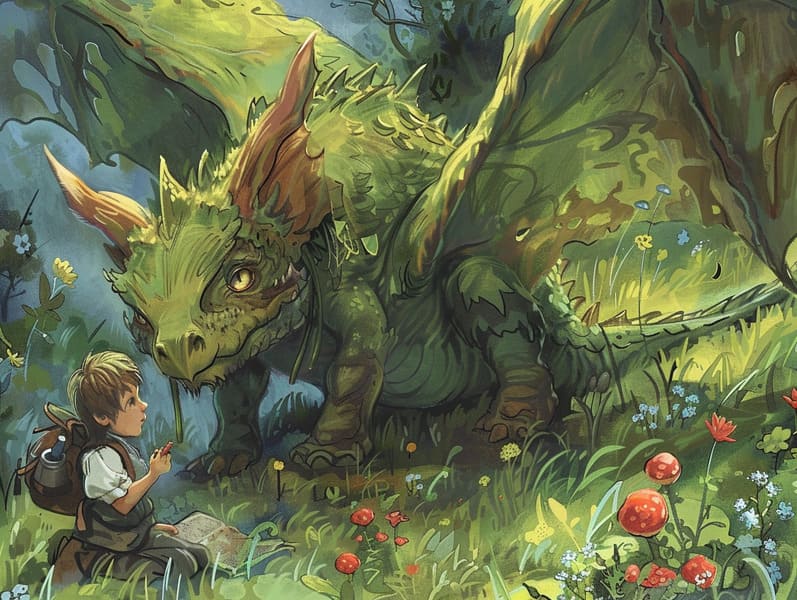Uncovering the Past of Grimm's Fairy Tales and Their Unwavering Appeal.
Uncovering the Past of Grimm's Fairy Tales and Their Unwavering Appeal.
Blog Article

Old fairy tales have ancient roots. These tales have been transmitted from one generation to the next millennia before they were ever documented. They arose from a variety of cultures, including American traditions. They were initially passed along among mature audiences, often carrying themes and messages relevant to the societal norms and beliefs of the time.
The Grimm brothers, Jacob and Wilhelm Grimm, were among the first to collect and release many of these beloved tales. Their volume, "Grimm's Fairy Stories," included narratives like "The Little Glass Slipper," "Little Brother and Little Sister," and "The True Story of Snow White," which have since become staples in the world of timeless fairy tales. Similarly, Andersen's enchanting stories, such as "The Sea Maid," and "The Duckling that Could," have enchanted hearts worldwide, cementing their place in the pantheon of classic fairy tales.
Though they are old, fairy tales remain as significant as ever, especially as nighttime stories for kids. These magical stories are now available in diverse formats, including gorgeously illustrated books, charming animations, and online fairy tales.
Their lasting appeal can be credited to several captivating elements:
Life Lessons: Classic fairy tales often provide important moral lessons. Tales like "The Tale of the Boy Who Cried Wolf" teach the significance of truthfulness, while "The Tortoise and the Hare" exemplify the qualities of persistence and unpretentiousness. These narratives offer the young clear distinctions between right and wrong, helping to shape their moral compass in a soft yet profound way.
Empathy and Understanding: Fairy tales frequently feature heroines facing struggles and tests, inspiring audiences to connect with their struggles and rally behind their triumphs. For instance, "The Story of Beauty and the Beast" points out the significance of appreciating inner worth to realize the true being of a soul, strengthening perception and comprehension.
Cultural Appreciation: Many old fairy tales are rooted in the cultural contexts from which they developed. Understanding these fairy tales can provide enlightening views into different historical contexts, advancing a sense of cultural awareness and knowledge.
Imagination and Innovation: The extraordinary elements in classic fairy tales—enchanted objects—foster children’s innovative ideas. These fairy tales take readers to mythical realms, boosting fantasy-filled thoughts and a sense of mystery that stays a lifetime.
Traditional fairy tales are not only mesmerizing but also instructive. They provide entrancing tools in developing various thinking and feeling skills in the young. When old fairy tales are spoken out loud, they improve speech development by teaching new language items and complicated sentence structures. This practice also nurtures hearing abilities and attention, as young ones remain attentive, enthusiastic to see what happens next.
Furthermore, examining the themes awesome site and characters of fairy tales can sharpen critical thinking and thought processes. Kids are educated to spot patterns, make predictions, and make sense of cause and effect. These explorations also boost the young verbalize their thoughts and feelings, advancing their emotional intelligence.
In today’s technological era, the prevalence of digital fairy tales has made these narratives more obtainable than ever. Online resources and programs make available broad selections of ancient fairy tales that can be experienced or listened on anytime, anywhere. Fairy tales recited are particularly prevalent, providing an enjoyable way for the young to appreciate these delightful tales. Audio stories and read-out-loud stories bring characters and settings to life, often accompanied by whimsical music and music that raise the narrative journey.
The lasting appeal of ancient fairy tales lies in their ability to shift to modern times while preserving their core messages. Contemporary adaptations of these fairy tales often integrate more inclusive protagonists and modern settings, making them relatable to today’s audience. However, the key lessons of fearlessness, compassion, and righteousness remain unchanged, continuing to touch readers of all ages.
Ancient fairy tales also offer a sense of solace and homeliness. They render accessible a well-arranged narrative with a distinct beginning, middle, and end, often wrapping up with the culmination of conflicts and the triumph of righteousness over wickedness. This certainty can be relieving for the young, proffering a sense of unchangeability in an unpredictable world.
Traditional fairy tales continue to spellbind and educate new generations, maintaining their mystique and meaningfulness in modern society. As nighttime stories for kids, they render a perfect blend of charm and enlightenment, encouraging moral values, empathy, and creativity. The existence of internet fairy tales and the sought after status of fairy tales spoken guarantee that these timeless narratives remain attainable to new generations.
By upholding and telling these tales, we continue to venerate the rich tapestry of tales and cultural heritage. Whether you are experiencing a gorgeously illustrated book, browsing a virtual collection, or listening to an spoken story, the fascination of bedtime fairy tales is always within reach. These stories illustrate of the timeless strength of fairy tales and its ability to unite us across time and space.
If you are experiencing a gorgeously illustrated book, browsing a electronic library, or playing an voice book, the loveliness of popular fairy tales is always within reach.
These tales demonstrate of the unending force of stories and its ability to unify us across centuries and lands, forming a connection that fascinates and enlightens alike.